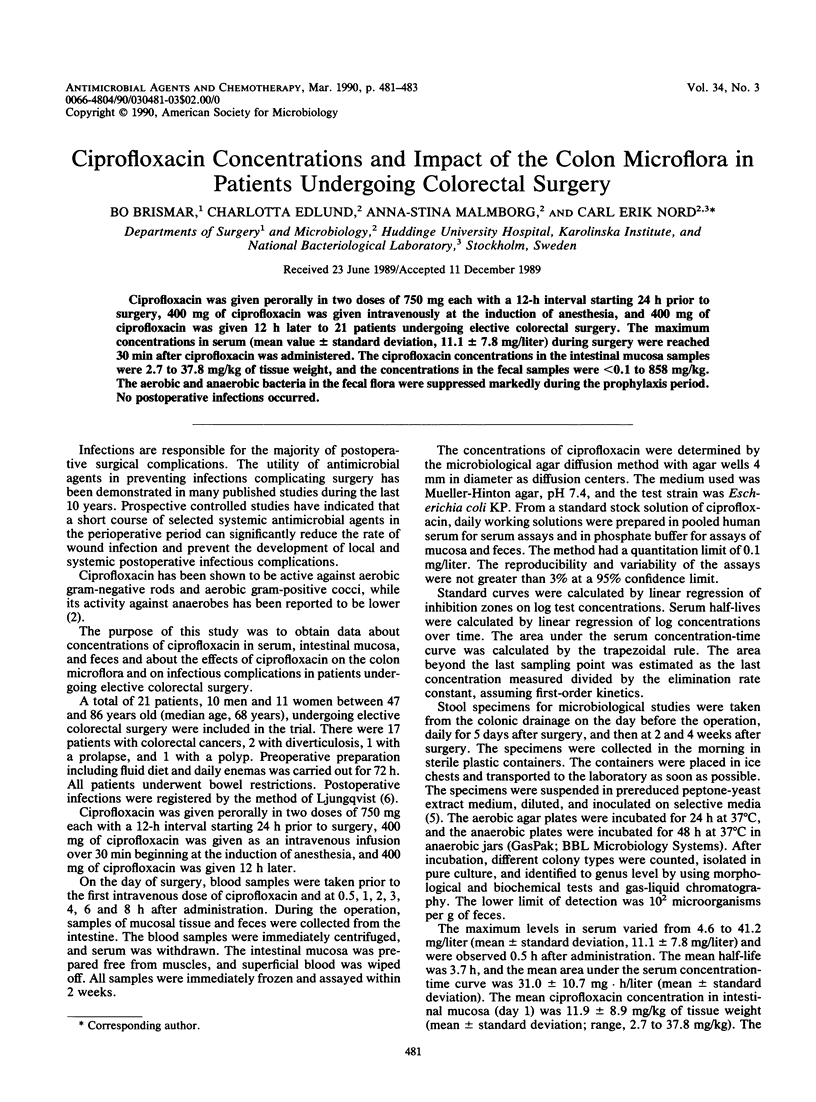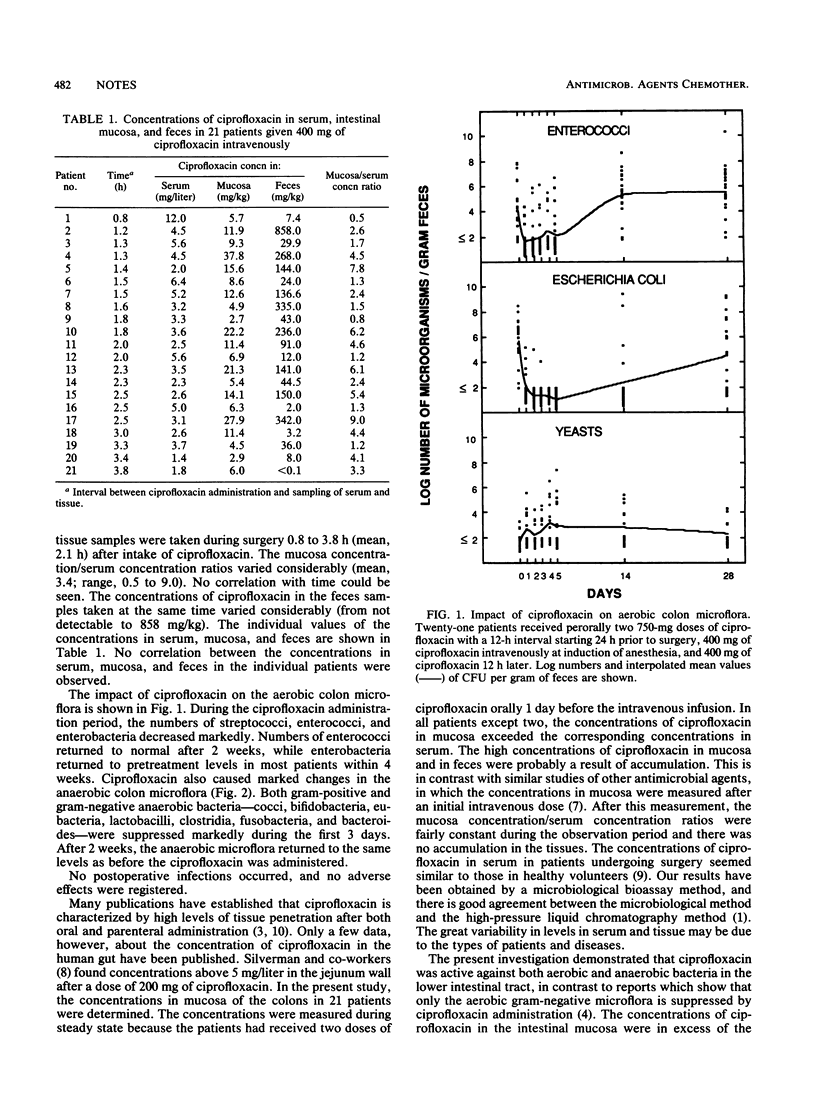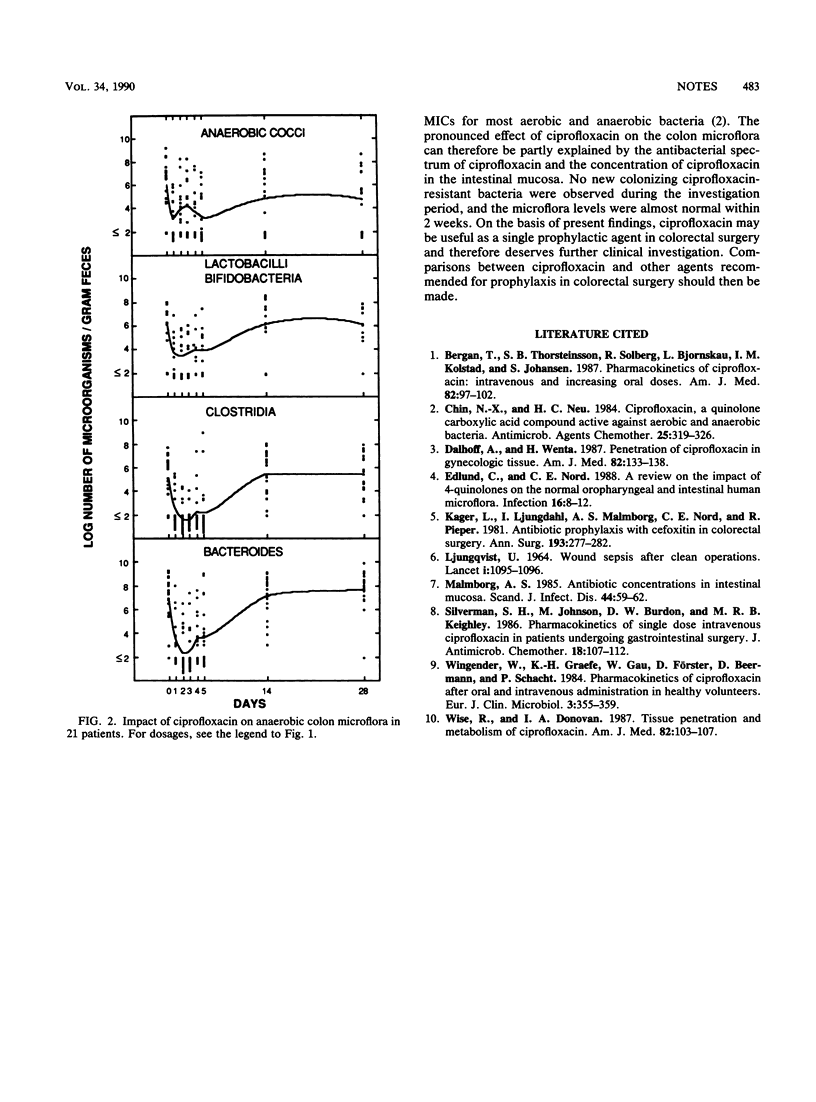Abstract
Ciprofloxacin was given perorally in two doses of 750 mg each with a 12-h interval starting 24 h prior to surgery, 400 mg of ciprofloxacin was given intravenously at the induction of anesthesia, and 400 mg of ciprofloxacin was given 12 h later to 21 patients undergoing elective colorectal surgery. The maximum concentrations in serum (mean value +/- standard deviation, 11.1 +/- 7.8 mg/liter) during surgery were reached 30 min after ciprofloxacin was administered. The ciprofloxacin concentrations in the intestinal mucosa samples were 2.7 to 37.8 mg/kg of tissue weight, and the concentrations in the fecal samples were less than 0.1 to 858 mg/kg. The aerobic and anaerobic bacteria in the fecal flora were suppressed markedly during the prophylaxis period. No postoperative infections occurred.
Full text
PDF


Selected References
These references are in PubMed. This may not be the complete list of references from this article.
- Bergan T., Thorsteinsson S. B., Solberg R., Bjornskau L., Kolstad I. M., Johnsen S. Pharmacokinetics of ciprofloxacin: intravenous and increasing oral doses. Am J Med. 1987 Apr 27;82(4A):97–102. [PubMed] [Google Scholar]
- Chin N. X., Neu H. C. Ciprofloxacin, a quinolone carboxylic acid compound active against aerobic and anaerobic bacteria. Antimicrob Agents Chemother. 1984 Mar;25(3):319–326. doi: 10.1128/aac.25.3.319. [DOI] [PMC free article] [PubMed] [Google Scholar]
- Dalhoff A., Weuta H. Penetration of ciprofloxacin into gynecologic tissues. Am J Med. 1987 Apr 27;82(4A):133–138. [PubMed] [Google Scholar]
- Edlund C., Nord C. E. A review on the impact of 4-quinolones on the normal oropharyngeal and intestinal human microflora. Infection. 1988;16(1):8–12. doi: 10.1007/BF01646921. [DOI] [PubMed] [Google Scholar]
- Kager L., Ljungdahl I., Malmborg A. S., Nord C. E., Pieper R., Dahlgren P. Antibiotic prophylaxis with cefoxitin in colorectal surgery: effect on the colon microflora and septic complications--a clinical model for prediction of the benefit and risks in using a new antibiotic in prophylaxis. Ann Surg. 1981 Mar;193(3):277–282. doi: 10.1097/00000658-198103000-00005. [DOI] [PMC free article] [PubMed] [Google Scholar]
- LJUNGQVIST U. WOUND SEPSIS AFTER CLEAN OPERATIONS. Lancet. 1964 May 16;1(7342):1095–1097. doi: 10.1016/s0140-6736(64)91291-7. [DOI] [PubMed] [Google Scholar]
- Malmborg A. S. Antibiotic concentrations in intestinal mucosa. Scand J Infect Dis Suppl. 1985;44:59–62. [PubMed] [Google Scholar]
- Silverman S. H., Johnson M., Burdon D. W., Keighley M. R. Pharmacokinetics of single dose intravenous ciprofloxacin in patients undergoing gastrointestinal surgery. J Antimicrob Chemother. 1986 Jul;18(1):107–112. doi: 10.1093/jac/18.1.107. [DOI] [PubMed] [Google Scholar]
- Wingender W., Graefe K. H., Gau W., Förster D., Beermann D., Schacht P. Pharmacokinetics of ciprofloxacin after oral and intravenous administration in healthy volunteers. Eur J Clin Microbiol. 1984 Aug;3(4):355–359. doi: 10.1007/BF01977494. [DOI] [PubMed] [Google Scholar]
- Wise R., Donovan I. A. Tissue penetration and metabolism of ciprofloxacin. Am J Med. 1987 Apr 27;82(4A):103–107. [PubMed] [Google Scholar]


